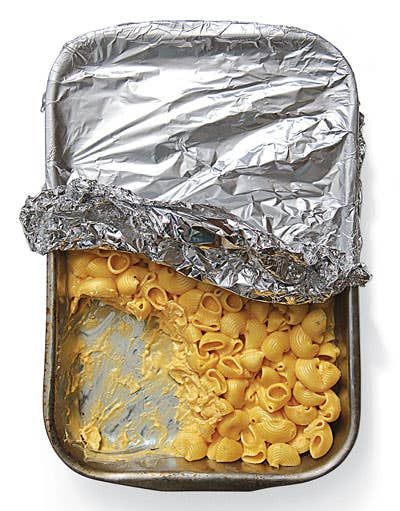
Built to Please
There’s some subtle chemistry behind the universal appeal of delicious, gooey macaroni and cheese.
As you prepare, say, our four-cheese macaroni and cheese (see ** Four-Cheese Macaroni and Cheese**), you're actually pulling off an intricate choreography of chemical processes. Boil macaroni, and the heat will cause starch molecules to relax their crystal structure and absorb water. It's called gelatinization. The macaroni swells, and if you stop short of al dente, you'll allow those starch molecules to take in additional moisture from the sauce later. You're gelatinizing again when you make the roux and bechamel; the objective in this case, according to Paula Figoni, a professor of food science at Johnson & Wales University, is to "separate and coat flour particles with fat so that when the starch in the flour gelatinizes, it does so evenly." The result? A smooth sauce that won't break when cheese is added.
The kind of cheese you choose matters, too. The proteins in an aged one will have broken down a bit, which makes them better able to emulsify in the sauce. (In the case of Velveeta, emulsifying salts are added to make the proteins more soluble.) If you bake your mac and cheese, another process takes place: the Maillard Reaction, in which amino acids and sugars react in the presence of heat to produce toasty, nutty flavors. "Macaroni and cheese has an ideal mix of compounds present for the Maillard Reaction," says Lloyd Metzger, Alfred Chair in Dairy Education at South Dakota State University. "And when the macaroni and cheese is heated a second time, a new group of flavor compounds are created." What's more, the gelatinization you initiated in the macaroni the first time around will have, over a day in the fridge, given way to retrogradation, in which the starch molecules align and form hydrogen bonds, giving the pasta an enhanced, toothsome firmness. Thus macaroni and cheese's capacity to taste even better, and more complex, the next day is built into the ingenious design of the dish. Fresh or leftover, it really is the perfect food.
Keep Reading
Continue to Next Story










